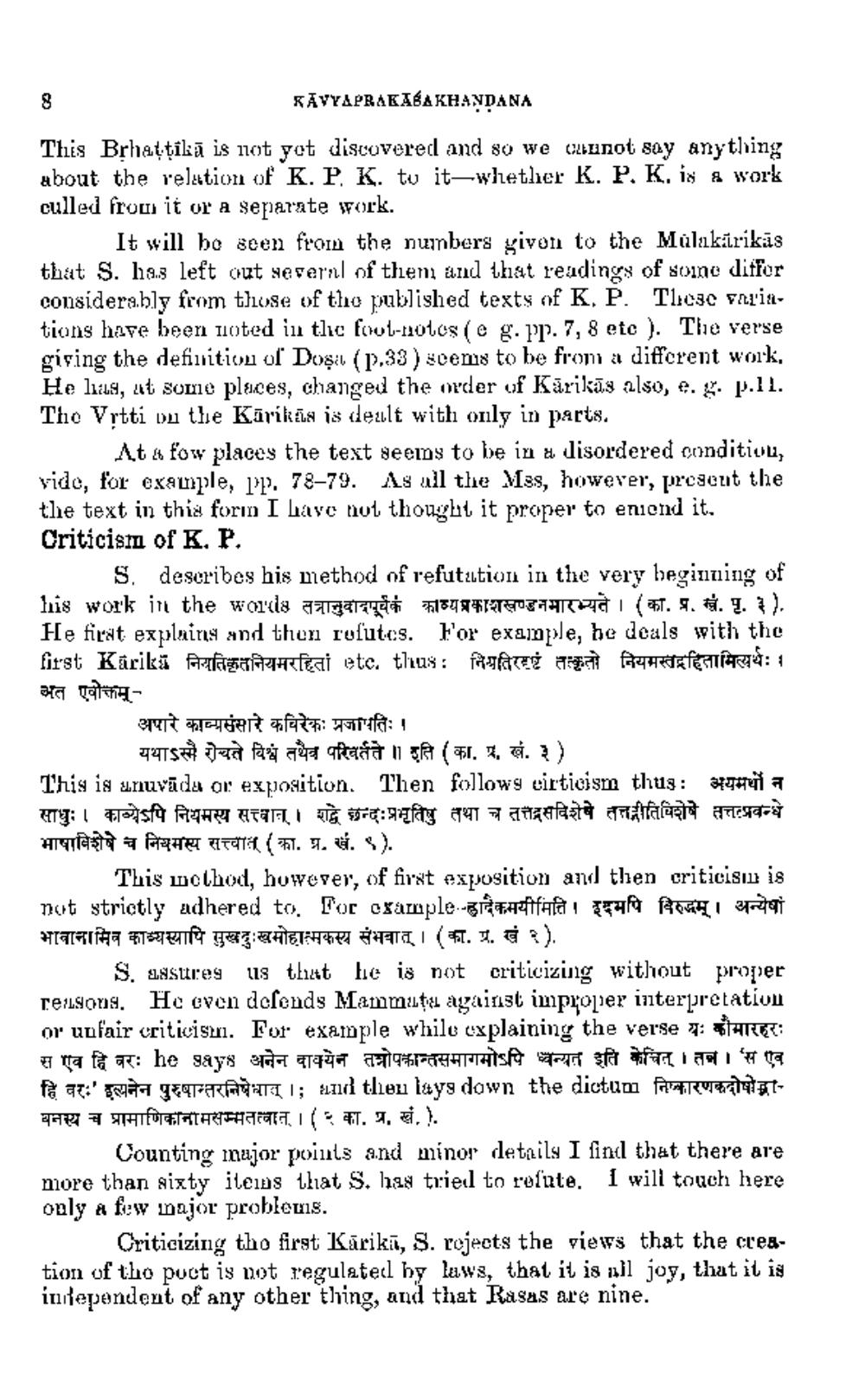________________
KAVYAPRAKASAKHANDANA
This Brhattikā is not yet discovered and so we cannot say anything about the relation of K. P. K. tv it-w etler K. P. K. is a work culled from it or a separate work.
It will be seen from the numbers yivon to the Mülıkārikās that S. 19.3 left out nesernl of them and that readings of soino diffor considerably from those of tho published texts of K. P. Tlcsc Feriations have been 10ted in the footnotes (eg pr. 7, 8 etc ). The verse giving the definitivu of Dosi (1),33) seems to be from a different work, He laus, ut some places, changed the order of Kārikās also, e.g. p.11. The Vitti vu the Kāríkās is deult with only in parts.
At a fow places the text seems to be in a disordered condition, vido, for example, pp. 78–79. As ul the Mas, however, present the the text in thia forin I have not thought it proper to eniend it. Criticism of K, P.
S. describes his method of refutation in the very beginning of his work in the words amaz F1345#175AHRC (.9. I. 1). He firat explains and then rosutcs. For example, he deals with the first Karika Plegantifeai etc. thus: pari a face ETTLACH: अत एवोक्तम्
Cudar a atufa: 1
यथाऽस्मै रोयते विश्व तथैव परिवर्तते ॥ इति ( का. प्र. खं. ३) This is unurūda ar exposition. Then follows virticism thus: H eta साधुः । काव्येऽपि नियमस्य सत्त्वात् । शद्वे छन्दःप्रभृतिषु तथा च तत्तद्रसविशेषे तत्तद्रीतिविशेषे तत्तत्प्रवन्धे Anato a P ta (#1. . .S).
This method, however, of first exposition and then criticism is not strictly adhered to. foc cxample-grantie ! Eu Peroni patat Haqua 475 gaz *** ÅTT (FT. 1. 2).
S. ussures us that he is not criticizing without proper tersons. He even defends Mammut against improper interpretation or unfair criticism. For example whilo explaining the verse 2: RE: uma at: he says Be T9 7171994AHA SA LITEIT TE for at:' na ger aTT 1; and thieu lays down the dictum ferunt घनस्य च प्रामाणिकानामसम्मतत्वात । (२ का. प्र. खं..
Counting mujor points and minor details I find that there are more than sixty iteins that S. has tried to rolute. I will touch here only a few major probleus.
Criticizing the first Kārikā, 8. rojects the views that the creation of tho puct is not regulated by laws, that it is all joy, that it is iuilependent of any other thing, and that Rasus are nine.




